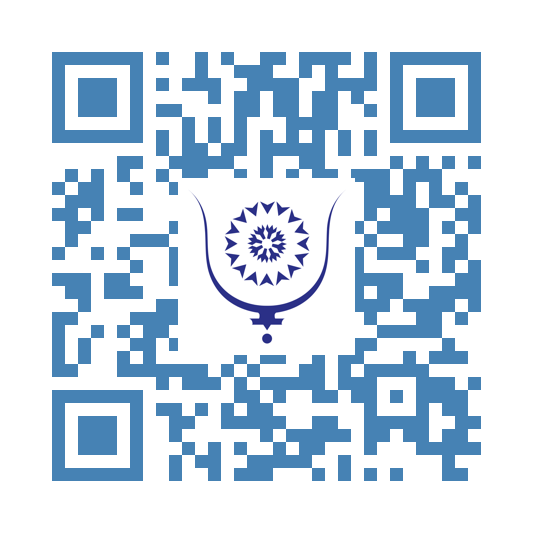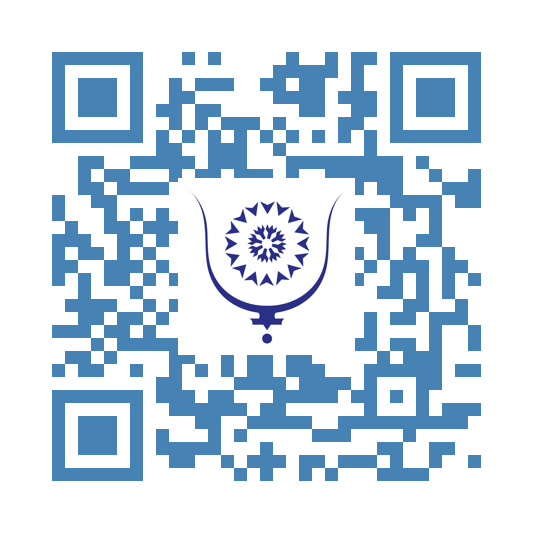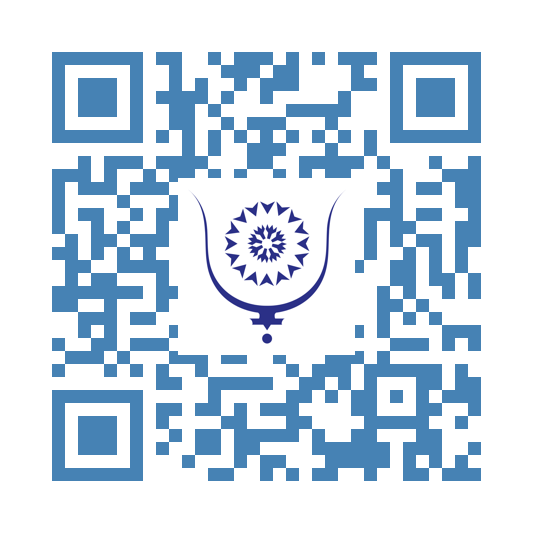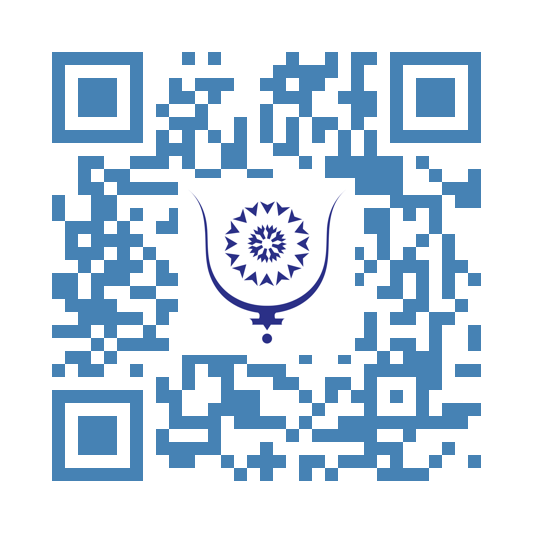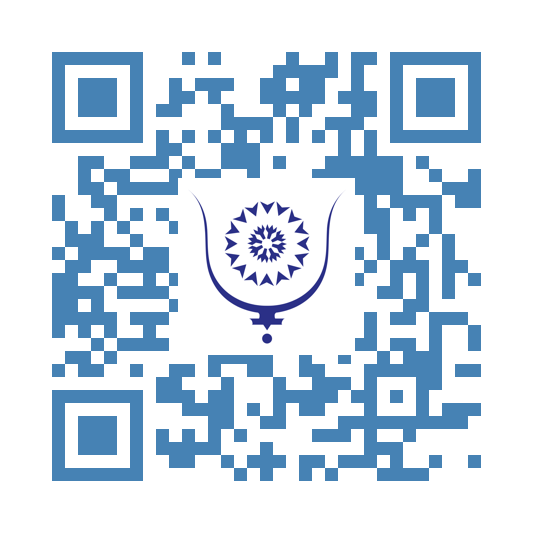Snake Venom That Does Nothing to a Honey Badger, Kills a Human
The honey badger is one of nature's toughest creatures. Despite its small size, this fearless animal isn't afraid to take on some of the most dangerous predators, including venomous snakes. What’s truly fascinating is that the snake venom that can kill a human has little effect on a honey badger----
The honey badger, also called a ratel, lives in Africa, Southwest Asia, and parts of India. It’s known for its aggressive behavior, strong build, and thick, loose skin, which makes it hard for snake fangs to deliver a full dose of venom. This tough skin is one reason why honey badgers can survive snake bites that would be deadly to other animals.
----
But the honey badger's resistance to venom isn't just about its skin. Scientists have discovered that honey badgers have special adaptations at the molecular level. Snake venom typically attacks nerve cells by binding to specific receptors. However, the honey badger's receptors have evolved to be less affected by these toxins, allowing the badger to survive bites that would be fatal to humans.
----
Another interesting aspect is how honey badgers react when bitten. They might show signs of being affected by the venom, such as slowing down or swelling, but they often recover quickly. This suggests that their bodies have proteins or other molecules that neutralize the venom, helping them bounce back after an encounter with a deadly snake. FASCINATING, right?
Share:
Snake Venom That Does Nothing to a Honey Badger, Kills a Human
copy:
https://bluwr.com/p/22051623
Can You Become a Millionaire by Working on Venom? Yes!
The idea of becoming a millionaire might conjure images of tech startups, real estate investments, or Wall Street. But working with venom can be your ticket to wealth, thanks to its significant medical and commercial potential. ----
Venom, produced by creatures like snakes, spiders, and scorpions, is a complex mixture of proteins and peptides. These toxic cocktails hold incredible potential for medical applications, creating a profitable intersection of nature and science.----
Venom-derived drugs have made significant impacts in medicine. For instance:
- Captopril, derived from the Brazilian pit viper's venom, generates over $1 billion annually in revenue.
- Prialt, a painkiller from cone snail venom, can cost up to $20,000 per year per patient.
----
The pharmaceutical industry constantly seeks new compounds for effective treatments. Venom-derived substances are particularly appealing, leading to substantial investments in research and development. This can result in lucrative patents and partnerships.----
Venom production and farming are other profitable ventures. Companies like Amsaal Venom Farm LLC specialize in producing and distributing venom for research and antivenom production. High-quality venom can sell for up to $5,000 per gram, depending on the species and purity.----
Owning patents on venom-derived compounds is highly lucrative. Licensing these patents to pharmaceutical companies can yield substantial royalty payments. For example, licensing agreements typically offer 3–5% royalties on net sales. A successful drug generating $500 million annually could provide $15-$25 million in royalties.----
Imagine discovering a new venom-derived compound that becomes a best-selling drug. With an annual revenue of $1 billion and a 3% royalty, you could earn $30 million per year. Alternatively, running a venom farm producing 100 grams of high-quality venom per year could generate $500,000 annually, assuming a $5,000 per gram price.
Share:
Can You Become a Millionaire by Working on Venom? Yes!
copy:
https://bluwr.com/p/21621652
How Nature's Deadliest Creatures Influence Medicines?
When we think about the most dangerous animals in the world, we often imagine deadly snakes, venomous spiders, or stinging scorpions. These creatures are feared for their powerful venoms, but what if I told you that their venoms could save lives? It may sound surprising, but many scientists are now using these dangerous venoms to create new medicines. Here are some of my thoughts on this fascinating topic. Spider venom might give you chills, but it is also giving hope to people who suffer from strokes. The Australian funnel-web spider (Atrax robustus) produces a venom that contains a peptide called Hi1a. This peptide has been found to protect brain cells from damage caused by a stroke. Researchers are studying Hi1a to create treatments that could save the lives of stroke victims and help them recover more quickly.
Snakes are some of the most feared animals on the planet, but their venom is helping to treat serious illnesses. For example, the Brazilian pit viper (Bothrops jararaca) produces a venom that contains a molecule called bradykinin-potentiating peptide (BPP). This molecule has been used to develop a class of drugs known as ACE inhibitors, which are commonly prescribed to treat high blood pressure and heart failure. These drugs work by relaxing blood vessels and reducing blood pressure, turning a deadly venom into a lifesaving medication.
Scorpion venom is another powerful substance that is being turned into medicine. Researchers have found that a protein in scorpion venom, chlorotoxin, can bind specifically to cancer cells without affecting healthy cells. This discovery has led to the development of a drug called Tumor Paint, which helps surgeons see cancer cells more clearly during surgery. The venom of the deathstalker scorpion (Leiurus quinquestriatus) is being harnessed to ensure that cancerous tissue is removed more precisely, reducing the risk of recurrence.
The ocean is home to many venomous creatures, like cone snails and jellyfish. The venom of the cone snail (Conus magus) contains a compound called ziconotide, which has been developed into a drug for severe chronic pain. Ziconotide works by blocking calcium channels in nerve cells, preventing pain signals from reaching the brain. This non-opioid painkiller offers a powerful alternative to traditional pain medications and has been a significant breakthrough in pain management.
Bees and wasps are often seen as pests, but their venoms are being used to help treat autoimmune diseases. Melittin, a peptide found in bee venom, has shown potential in treating conditions like multiple sclerosis and rheumatoid arthritis. Melittin can modulate the immune response and reduce inflammation. Scientists are working to isolate and modify melittin to enhance its therapeutic effects while minimizing side effects, offering new hope to patients with these challenging conditions.
The Gila monster is a venomous lizard whose saliva contains a hormone called exendin-4. This hormone has been turned into a drug called exenatide, which helps people with type 2 diabetes manage their blood sugar levels. Exenatide mimics the action of a natural hormone that stimulates insulin release and inhibits glucagon production, effectively controlling blood glucose levels. It's amazing to think that a substance from a lizard's mouth can help millions of people control their diabetes.
Centipedes might seem like creepy crawlies, but their venom is showing promise as a pain reliever. The venom of the Chinese red-headed centipede (Scolopendra subspinipes mutilans) contains a peptide called SsTx. SsTx can block pain signals by inhibiting sodium channels in nerve cells, offering a new approach to pain management. Researchers are synthesizing SsTx in the lab and conducting trials to evaluate its effectiveness and safety, potentially leading to new, non-addictive painkillers.
It is truly fascinating how scientists can transform deadly venoms into life-saving medicines. Studying these natural toxins, researchers are finding new ways to treat some of the most challenging diseases and conditions. This innovation shows the incredible diversity of nature and emphasizes the importance of preserving these species and their habitats. The transformation from venom to cure is a remarkable testament to human ingenuity and the power of nature.
Attached, please find our open-source scientific article explaining everything in detail.
Share:
How Nature's Deadliest Creatures Influence Medicines?
copy:
https://bluwr.com/p/21248252
Artificial Illusion: The Hype of AI - Part 1
I personally see AI as a hype that will slow down with time. Nowadays, people include AI in their projects to seize opportunities. For example, if you have a failing business, just add the word AI and you might attract investments. If you're doing research, switch to AI or include a part of it, even if it's not necessary, and you may receive funding. AI is becoming a buzzword, and if you believe it's not, you might get frustrated. You might feel unworthy as a human and worry about being replaced by a robot that lacks emotions, creativity, and the incomparable qualities of the legendary creation: humans.
As I mentioned in a previous opinion article, "Just use AI in your speech and you'll sound fancy." This trend has permeated many sectors. I’ve had conversations with CEOs of startups that claim to use AI for groundbreaking innovations :). When I asked them simple questions about the models they used, the reasoning behind their choices, and the specific applications, they would talk broadly about AI—just AI, yes AI, and that’s it.
It's reminiscent of the old saying, "Fake it till you make it," but with a modern twist: "Artificial Illusion." As Mark Twain once said, "It's easier to fool people than to convince them that they have been fooled." This seems particularly true in the world of AI hype.
The enthusiasm for AI has led to a phenomenon where merely mentioning it can lend credibility and attract resources, even when the actual implementation is minimal or superficial. This trend not only dilutes the genuine potential of AI but also risks disillusioning stakeholders who may eventually see through the facade. True innovation requires substance, not just buzzwords.
If Shakespeare were alive today, he might quip, "To AI, or not to AI, that is the question." The answer, of course, is that while AI has its place, it’s not the end-all and be-all. We should remember Albert Einstein's wise words: "Imagination is more important than knowledge." AI lacks the imagination and creativity that humans bring to the table.
The real secret to success isn’t in the latest tech jargon, but in honest, hard work and genuine innovation. So next time someone dazzles you with their AI-powered business model, just remember: A little skepticism can go a long way. Or as George Bernard Shaw put it, "Beware of false knowledge; it is more dangerous than ignorance."
Share:
Artificial Illusion: The Hype of AI - Part 1
copy:
https://bluwr.com/p/18805311
I Spent 7 Days in Singapore... My Life Changed, Here is Why
Spending a week in Singapore was an unforgettable experience that left a lasting impact on my life. From the moment I arrived, I was captivated by the city's unique blend of modernity and tradition, its vibrant culture, and its cutting-edge innovation. Here are the key moments and discoveries that made my stay transformative.
Day 1: A Fusion of Cultures
Singapore is a blend of various cultures, and this was immediately evident. Wandering through neighborhoods like Chinatown, Little India, and Kampong Glam, I immersed myself in diverse traditions, cuisines, and architectures. Each area told a story of the people who have made Singapore their home. In Chinatown, I visited temples and savored street food while chatting with local shopkeepers (mainly in Chinese Mandarin) who shared the history of their businesses. Little India dazzled me with its colorful markets and the aroma of spices, where I learned about Indian festivals and rituals from friendly vendors. Kampong Glam, with its vibrant street art and the majestic Sultan Mosque, offered insights into Malay culture. This cultural immersion made me feel connected to the global community, appreciating the rich traditions that coexist harmoniously in Singapore.
Day 2: A Green Oasis in a Concrete Jungle
The Gardens by the Bay was a highlight of my trip. The futuristic Supertree Grove and the serene Cloud Forest left me in awe of how Singapore harmonizes nature with urban life. I spent hours exploring the lush landscapes, marveling at the diversity of plant species. A gardener I met shared stories about the meticulous care and effort that goes into maintaining these green spaces, emphasizing Singapore's commitment to sustainability and green living. This encounter inspired me to think more about how I can incorporate eco-friendly practices into my daily routine. Despite the city's strict rules, which made finding a smoking area a bit of a challenge, I appreciated the clean and green environment that these regulations help maintain.
Day 3: Innovation and Inspiration
Attending the 22nd World Congress of the International Society on Toxinology was the primary reason for my visit. Here, I had the honor of presenting my research and engaging with some of the brightest minds in the field. Conversations with researchers like Pr. Jan Tytgat and Pr. Manjunatha Kini opened my eyes to new possibilities in my work. Their innovative approaches and groundbreaking discoveries reignited my passion for scientific research. The congress was held at the National University of Singapore (NUS), and I was struck by the beauty and modernity of the campus. NUS, with its state-of-the-art facilities and vibrant academic atmosphere, stands as a testament to Singapore's commitment to education and research excellence.
Day 4: Culinary Adventures and Unexpected Encounters
Singapore's food scene is legendary, and I made it a mission to try as many local dishes as possible. From hawker centers to high-end restaurants, each meal was a culinary adventure. Trying dishes like Hainanese chicken rice, laksa, and chili crab expanded my palate and appreciation for the artistry of food. At a late-night food stall in Newton Food Centre, I struck up a conversation with a group of construction workers who shared their experiences and struggles. Their stories of hard work and resilience left a lasting impression on me, highlighting the human side of Singapore's rapid development. Despite the strict laws, the city felt incredibly welcoming and orderly, contributing to its reputation as a clean and safe destination.
Day 5: A Glimpse into the Future and a Brush with Reality
A visit to the Singapore Science Centre and Fusionopolis showcased the country's commitment to technological advancement. The innovations in AI, biotechnology, and sustainable development were impressive and motivating. Seeing these advancements firsthand made me more enthusiastic about the potential of my own research in AI for drug discovery. Later that night, while exploring Geylang, a less-touristy part of town, I had an unexpected encounter with a group of youths who shared tales of their tough upbringing and the challenges they face. This stark contrast to the city's polished exterior added a layer of depth to my understanding of Singapore, showing that even in a seemingly perfect city, there are stories of struggle and resilience.
Day 6: Reflection and Growth
On my penultimate day, I took some time for personal reflection at the serene East Coast Park. The peaceful environment provided the perfect backdrop to contemplate my experiences and the new insights I had gained. A local fisherman I met there shared his life philosophy, emphasizing the importance of balance and mindfulness. This interaction made me realize the importance of balancing professional aspirations with personal well-being. The warm, tropical weather, although humid, added to the overall tranquility of the park. As I sat by the sea, watching the ships go by, I felt a profound sense of calm and clarity, understanding the need to find harmony in life.
Day 7: Farewell with a New Perspective
As my time in Singapore came to an end, I felt a profound sense of gratitude. The city's spirit of innovation, cultural richness, and commitment to sustainability had left an indelible mark on me. I was especially struck by the friendliness and honesty of the people. Everywhere I went, locals were ready to help, whether it was giving directions or sharing their stories. Unlike many other cities, I didn't encounter any scammers or beggars, which added to the sense of safety and trust. I returned home with a renewed sense of purpose, inspired to incorporate the lessons I learned into my everyday life and research.
My seven days in Singapore were more than just a trip; they were a series of experiences that changed me. This dynamic city showed me the power of diversity, the importance of innovation, and the value of sustainability. My interactions with people from all walks of life, from researchers to laborers to those on the fringes of society, gave me a more nuanced perspective. My life was changed in ways I never expected, and I am eager to see how these experiences will shape my future.
Share:
I Spent 7 Days in Singapore... My Life Changed, Here is Why
copy:
https://bluwr.com/p/16389973
Read This Blog and You Will Become an AUTHOR
Writing consistently is a simple action with profound impact. I discovered its transformative power firsthand, reshaping how I understand myself and the world around me. In this blog, I share how regular writing can change your life, as it did mine.
Gaining Clarity
Writing has always been part of my life, but committing to it daily unveiled its true potential. Amidst daily clutter and responsibilities, writing offered me clarity. Each word helped sift through the chaos of thoughts, allowing me to focus and prioritize. It was less about recording thoughts and more about understanding and organizing them.
Building Confidence and Expertise
With every piece I wrote, I found and refined my voice. My early writings were far from perfect, and that was okay. Each sentence and paragraph built my confidence. Writing about subjects I was passionate about, especially snake venom, not only allowed me to share knowledge but also deepened my own understanding. This cycle of learning and sharing became a cornerstone of my academic and professional growth.
Therapeutic Benefits
Long before I recognized its need, writing was my therapy. It offered a non-judgmental space to express vulnerabilities. Writing about daily challenges at university or personal concerns made these burdens lighter. It rendered fears and stresses tangible, making them easier to manage. This emotional outlet was vital for my mental well-being during the demanding years of my PhD.
Inspiring Others
As my writing skills improved, my audience grew. Through Bluwr, I connected with enthusiasts keen on understanding complex venom and AI topics. The positive feedback was incredibly rewarding, affirming that my words could make difficult concepts clearer for others.
Becoming an author is more about the routine of writing than publishing a book. Regular writing practice can change you—not just in communication, but in perception and interaction with the world. If you're considering starting, this is your sign.
Write a little every day, about anything that inspires you, here on Bluwr. Over time, you might discover that the author you aimed to be is simply who you've become through writing.
Share:
Read This Blog and You Will Become an AUTHOR
copy:
https://bluwr.com/p/13815068
AI Is Eroding The Art Of Writing
From a young age, I've been captivated by writers who express complex ideas through books, articles, and blogs. This inspired my dream of becoming a writer myself. Initially, I used writing as therapy; whenever I felt overwhelmed or distressed, I would write, knowing the paper wouldn't judge my feelings like humans might.
As I advanced in my education, enrolling in a PhD program, I honed my academic writing skills. However, the advent of generative AI models like ChatGPT marked a turning point. These tools could replicate much of what I considered unique in my writing, leading me to wonder if we are losing the art of writing.
With the rise of platforms like Medium and LinkedIn, blogging has become accessible to everyone, which is wonderful. However, it raises questions about authenticity. Can we truly know if the content was crafted by the person, or was it generated by AI? It's a distressing reality.
Previously, securing freelance writing or blogging jobs was straightforward, but it has become challenging to discern whether someone is genuinely a writer or merely claiming to be one. This ambiguity has narrowed opportunities for passionate young writers like myself, who wish to pursue their passion and earn a living.
I believe that the ancient wisdom of writing is being eroded by AI. However, this won't deter us from reading or writing. Human writing resonates with emotions, which AI-generated text often lacks, typically relying on repetitive phrases like "embark," "journey," "unleash," and "dive into." While everyone is free to use tools as they see fit, if AI constitutes more than 50% of your writing, then those aren't truly your words or expressions; they belong to the machine.
I personally use AI for my research, correcting grammatical mistakes, and sometimes for checking paraphrasing suggestions. However, once I began generating AI text, I started feeling that it wasn't truly mine. It felt more robotic than human, lacking any real emotion.
I truly believe that generative AI will never be able to reach the beauty and complexity of the human mind. How one can convey emotions through text is truly something distinctive of the human nature and will never be reproduced.
Share:
AI Is Eroding The Art Of Writing
copy:
https://bluwr.com/p/13174720
How Many Scorpions Do You Need To Make $100,000 Annually?
Starting a business in the specialized field of scorpion venom extraction can seem appealing because of the high prices that medical and research industries pay for this potent substance. However, making a lucrative income from milking scorpions is more complex than it might initially seem. I personally believe that understanding the numbers and logistics is essential before entering this unique venture.
Understanding Venom Value
Firstly, it’s important to acknowledge the market value of scorpion venom, which is among the most expensive liquids by volume. Depending on the species and the quality of the extraction, the venom can fetch anywhere from $8,000 to $12,000 per gram. The high cost is due to the venom’s use in medical research, including cancer treatment studies and antivenom production, making it highly sought after in specific scientific communities.
Practical Yields and Species Considerations
Not all scorpions are created equal when it comes to the value of their venom. Species like the Deathstalker (Leiurus quinquestriatus) are particularly coveted due to their potent venom, which is rich in compounds useful for medical research. However, even with a valuable species, the amount of venom each scorpion produces is minimal — typically around 0.5 to 2 milligrams per milking session, and you can safely milk them about twice a month.
The Math Behind the Venom
Let’s break down the numbers. To set a realistic income goal, suppose you aim to make $100,000 annually from venom sales. Assuming you can sell the venom at an average price of $10,000 per gram, you would need to produce 10 grams of venom each year. Since 1 gram equals 1,000 milligrams, you would need a total of 10,000 milligrams of venom annually.
Each scorpion might give you 1 milligram per milking, and if milked twice a month, that’s 24 milligrams per scorpion per year. To meet your income goal, you would therefore need about 417 scorpions. This figure highlights the scale of what might initially seem like a small operation.
Considerations and Challenges
Beyond just the numbers, there are significant challenges and considerations in setting up and running a scorpion venom extraction business:
Setup and Ongoing Costs: Initial costs can be quite high, as specialized equipment and facilities are needed to house and safely milk scorpions.
Legal and Ethical Issues: There are often stringent regulations governing the use of animals for commercial purposes, including licensing and welfare considerations.
Market Demand and Stability: The market for scorpion venom is niche and can be volatile. Establishing reliable connections within the industry is essential for success.
Personal Thoughts
I personally think that while the potential for high income is alluring, the scorpion venom extraction business requires a deep commitment and a robust understanding of both the science and the market. It’s not merely about having a large number of scorpions; it’s about creating a sustainable and ethical operation that can consistently produce high-quality venom in a market that is inherently limited and highly specialized.
Feel free to reach out if you’re interested in starting this business!
Share:
How Many Scorpions Do You Need To Make $100,000 Annually?
copy:
https://bluwr.com/p/12530222


